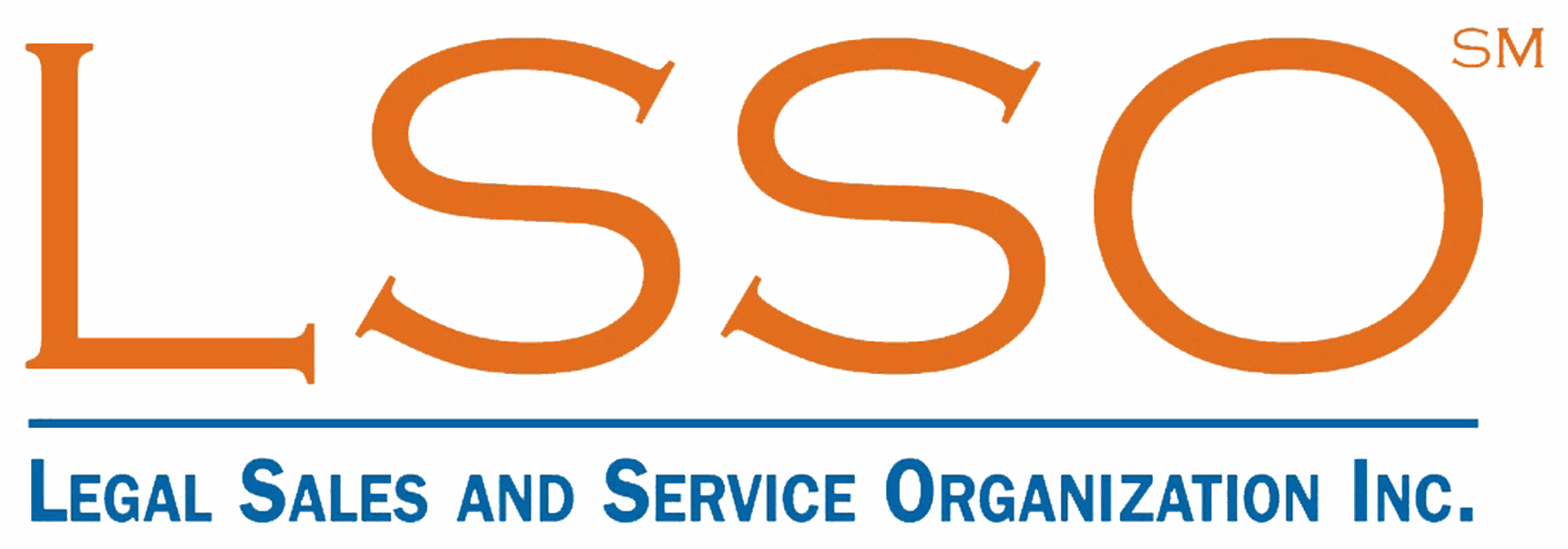Author: Ian Stewart, Vice President of Sales, Nexl & SSSME Founding Board Member*
Sales strategy works and revenue follows
Revenue growth may be fortuitous, but it’s far more consistent, predictable, and efficient if strategy takes the lead. As we wind down 2022, which is another way of saying wind up 2023, the firms who will lead in coming years on client experience, client feedback, employee retention, and especially on revenue growth will prioritize sales strategy now.
It makes intuitive sense – the single biggest lever that firms can pull today to impact revenue is enabling a sales strategy. Many firms have done well on top line growth through boom times, but competitive pressures are increasing, and the prospect of economic turmoil necessitates innovation. Yesterday’s growth drivers won’t propel tomorrow’s revenue expansion.
Still not convinced? Read on.
Why you should consider implementing a sales strategy for 2023
Law firms today face incredible pressures from consolidation, technological advancement, and economic forces that are all part of a new post-pandemic reality. In advising many of the best firms in the world, we consistently hear the following: books of business are more portable than ever, general counsel turnover and partner retirement present significant challenge to revenue growth and retention, the market for talent is still wildly tight and the expectations for recession are high. Moreover, employee burn out is prevalent.
I’m not suggesting that sales strategy can solve any of these. But I am proposing that sales strategy can help.
Sales strategy directs and focuses actions to defined goals. A well-planned sales strategy that includes measurable objectives (targets) and, in an ideal world, a codified sales process (think Miller Heiman or Sandler), qualification methodology (think BANT or MEDDICC), and the people and platform (Revenue Operations or CRM) to support it moves revenue generation and revenue forecasting from random chance to a predictable, repeatable, scalable process – from disorder to order. In other words, it’s a map for the road ahead. Notably, it’s a map that is proven to yield success. When sales strategy is in place, time is spent proactively executing on a defined plan rather than continuously repeating the same actions, meetings, and conversations ad nauseum.
To that end, think back to your childhood. For those of us who have come of age watching Looney Tunes, we’re familiar with the often recycled ‘looping map’ gag, in which Daffy Duck or Bugs Bunny traverse a map with swirling loops and crisscrossing paths as they inefficiently move from one point to another. In the same way that even a broken clock is right twice a day, our cartoon friends do eventually make it to their destination. But wouldn’t it have been more efficient to navigate a straight line? Unfortunately, for those of us who have spent time working without a clearly defined strategy, this may feel familiarly painful and elicit cries of frustration as opposed to belly-aching laughter. To put it another way, strategy is the course you’ll chart and operating without one has high opportunity costs and a cascade of subpar or adverse outcomes. By implementing a sales strategy, firms can gain a competitive advantage, focus on what matters most, institutionalize relationships, and maximize productivity among those participating in business development (BD) and sales efforts.
How are firms implementing sales strategy today?
At the most forward-thinking firms, they’re focusing on Revenue Operations and are reimaging the growth structure of the firm from the ground up through that lens. They’re aligning BD and Marketing under a single leader, some of whom are even referencing the word ‘sales’ outright in their title. They’re hiring sales executives, sales coaches, account managers…and aligning all of them into true account teams. They’re prioritizing an open, transparent culture and investing in technology and people to support these efforts. One major international firm we work with is even restructuring the firm’s revenue generating functions under a Chief Revenue Officer more akin to a technology company. None of this would have been imaginable at a law firm 25 years ago. While this is exciting, it represents only a small fraction of forward-thinking firms who are at the vanguard of a new era. What about the majority? And where to start when the firm hasn’t prioritized this before? Most firms aren’t implementing codified sales process and qualification methodologies (yet!), but they are recognizing some need to shift more resources to BD for 2023. BD leaders are picking a few things they can focus on to impact revenue.
Where to start
Firms are investing in technology (platform), people, and process in recognition of the shifting landscape. But not uniformly and only in ways that match their position on the sales maturity curve. Many firms face internal resistance and/or resource constraints. I sat with the Head of BD at one of the largest firms in the world recently and asked them what their dream state for the firm is. They responded that they want to see trained account managers and account executives embedded within industry-focused groups to maximize opportunities through deep industry acumen and sales expertise. Then immediately retorted that the firm is simply not there! So instead, they’re starting with something they can do now. They’re focusing on creating measurable growth objectives for their 10 top clients and creating a process in which their lawyers (seller-doers) and BD/Marketing teams can align in mini account teams at regular intervals with shared visibility and transparency to maximize cross-sell potential. Cue the applause!
Many firms are starting smaller with a recognition that they can focus well and execute on a few key objectives. Some clients of ours are working with us to create and execute on objectives (targets) around sector/industry expansion, cross-selling, key client programs, and – with a bit of longer vision – on succession planning and institutionalizing relationships. All of these allow for better client experience and revenue growth, and these straightforward objectives and plans lead to less burnout and frustration for those involved.
While I—a self-professed Sales Evangelist—hope that every firm will eventually entrench a highly trained sales function within industry-focused groups and deploy a sales process, I recognize that isn’t likely to occur industrywide overnight. There’s no need to boil the ocean for most firms. Start with the client objectives for next year and then build your three Ps (people, process, and platform) over time to support them.
How to scale overtime
You likely can’t hire, build, or buy your way into a perfect state overnight. But you can take steps to incrementally make progress.
Example: One of our clients—a leading globally recognized IP firm focused on the telecom, life-sciences, and oil/gas industries—pioneered a new approach to client and account management. The firm began working with us to gain basic relationship insights and manage a pipeline without the need for manual data entry. Over time, they gradually grew their internal sales motion and scaled the use of our proprietary platform to support a new, targeted commercial team (people). This ‘client satisfaction’ (C-SAT) team is tasked with managing and supporting client and referral relationships as well as driving growth strategies through the firm (process). It has become a critical business function, allowing the firm to grow significantly in the last few years while obtaining key accolades and client success. They didn’t start by boiling the ocean. They started with an objective and intentionally scaled the platform, people, and process around it.
Another example I can offer is closer to home. When I joined Nexl 15 months ago as the first institutional sales leader, I was tasked with helping move our organization from founder-led growth to a scalable sales organization operating on six continents. As a modern technology organization experiencing rapid growth and transformation, we needed to push on all three 3Ps simultaneously.
- Platform: We were fortunate that we could be our own customers and leverage our proprietary no-data-entry CRM and Revenue Operations Platform as the basis for collaboration, growth, and knowledge within our organization to achieve the same benefits we deliver our law firm clients.
- Process: We started by creating annual strategic objectives, regional targets, and business plans in the objective tracking section of our platform. We use SMART (Specific, Measurable, Achievable, Relevant, and Time-bound) goals, OKR (Objectives and Key Results) frameworks, and pipeline targets ($) to establish our focus for the year and align our teams. We then measure the progress over time, leverage the reporting and opportunity tracking functionality, and assign tasks within the platform accordingly to ensure we collaborate, follow through, and outperform while operating as ‘one firm.’
- People: We’ve used this structure to hire globally in a competitive landscape to the tune of tripling our team size and to embed our platform with 100+ new law firm clients. (We added new law firm clients and employees on six continents in under 12 months.) The tight labor market in 2022 meant we needed to be incredibly focused and aligned across teams, time zones, and offices as we only wanted to attract and hire top-tier talent. Once hired, we needed to have the right systems in place to ensure success and we were able to refer to the strategic objectives and targets to hold ourselves accountable. New hires had the same clear picture of what our goals were on Day One as our most tenured employees, enabling us to collaborate effectively with purpose and speed.
Key takeaways
Just start. Start wherever you are. But start with your clients in mind. Create objectives and targets for next year with them in mind. Make your targets measurable and realistic. Implement the 3 Ps to support them. Scale overtime. Perfection is often the obstacle of progress. And don’t forget to have fun!
> Download Nexl's recent whitepaper Revenue Operations for Law Firms: Why Some Law Firms Realize Their Potential (And Some Don't)
*LSSO is privileged to have access to – and be supported by – numerous legal sales and service subject matter experts (SSSMEs). As a benefit to our members and the legal community at large, we have invited several of these industry-leading professionals to band together as a SSSME Board, which will regularly offer relevant and timely news, trends, strategies, and thought leadership on best practices as well as practical examples of what works…and what doesn’t.

